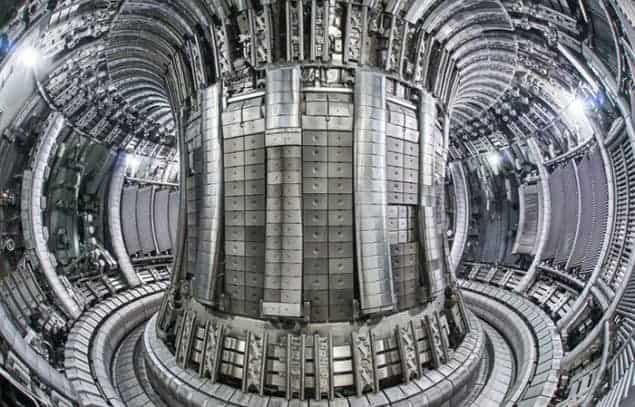
The UK government will continue to fund the Joint European Torus (JET) nuclear-fusion experiment until at least 2020, despite the country’s intention to leave the European Union (EU) in March 2019. JET is located in Oxfordshire and is run by the European Consortium for the Development of Fusion Energy, which gets about half of its funding from the EU’s Euratom Horizon 2020 programme.
JET is operated by the Culham Centre for Fusion Energy (CCFE) – the UK’s national fusion research laboratory – under a four-year €283m contract that expires in 2018. About 88% of the running costs of JET are paid for by the EU, causing some to worry about the fate of the lab after Brexit.
Fair share
In a bid to renew the contract, the UK Department for Business, Energy & Industrial Strategy says that it will continue to pay its “fair share” of JET running costs until 2020. Industry Secretary Greg Clark says: “JET is a prized facility at the centre of the UK’s global leadership in nuclear fusion research.”
JET is a magnetic-confinement plasma-physics experiment and is used to study how nuclei could be made to fuse together to unleash large amounts of clean energy. It is the precursor to the ITER fusion-energy demonstrator, which is currently being built in France. JET supports 1300 jobs in the UK, 600 of which are highly skilled scientists and engineers.



